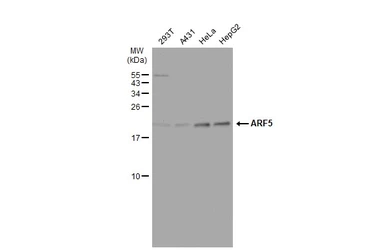ARF5 antibody
Cat. No. GTX104783
Cat. No. GTX104783
-
HostRabbit
-
ClonalityPolyclonal
-
IsotypeIgG
-
ApplicationsWB ICC/IF IHC-P
-
ReactivityHuman


